Locks and Security News: your weekly locks and security industry newsletter
24th April 2024 Issue no. 702
Your industry news - first
We strongly recommend viewing Locks and Security News full size in your web browser. Click our masthead above to visit our website version.
Access control systems for turnstiles
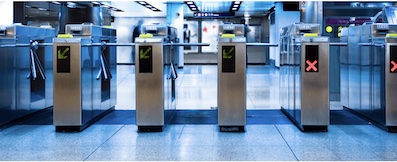 Turnstiles are a method of automating access control and entry. They can save space, save costs, and help process high levels of traffic efficiently. Turnstiles are particularly useful and commonly found in gyms and leisure centres, commercial office buildings, and government buildings.
Turnstiles are a method of automating access control and entry. They can save space, save costs, and help process high levels of traffic efficiently. Turnstiles are particularly useful and commonly found in gyms and leisure centres, commercial office buildings, and government buildings.
Turnstiles are a type of gate or barrier that only allows one person to pass through at a time. It’s a way to regulate the traffic into a restricted area or building.
Some turnstiles are manually controlled, with an operator triggering them to unlock for each person. For example, in a sports stadium there might be an official allowing people into the stadium seats one by one when they show a valid ticket.
Other turnstiles can be automated. This type of turnstile will remain in the locked position, and can’t be moved until an authorised person presents a valid credential. The method of authorising an individual can take a range of different forms. It might be a swipe card, a fingerprint or facial recognition system, or a keypad code. Whenever a valid credential is presented, the turnstile’s lock disengages, and the person can push through the gate.
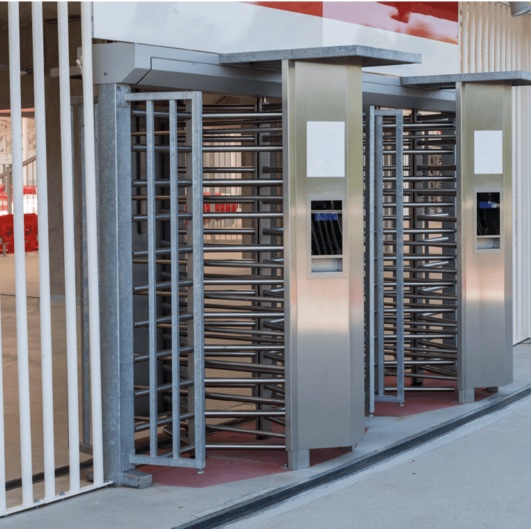 Types of turnstiles
Types of turnstiles
Turnstile is an umbrella term for a range of different types of pedestrian barriers. Generally, turnstiles consist of a revolving set of barriers installed at a height to impede access.
Waist-height turnstiles are very common. They generally involve a set of horizontal barriers fixed on one side. The barrier could be a revolving tripod or an arm that rises or slides out of the way to allow access.
Full-height turnstiles offer an added layer of security. Where waist-height turnstiles could be jumped over or crawled under, full-height turnstiles are more robust. They often consist of a series of horizontal bars from foot- to head-height forming a barrier. A series of these barriers revolve around a central point, with enough space between them to only allow one person to pass at a time.
Readers and keypads for turnstiles:
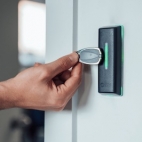 Card Readers
Card Readers
Readers are used in conjunction with traditional swipe cards, fobs, or tags in order to validate the identity of the person seeking to gain access. Generally, the reader is fitted to the top or immediate front of the side unit of the turnstile. When a person approaches, they hold their card or tag credential to the reader. The unique identifying data of the credential is passed wirelessly to the reader.
If it’s a standalone access control system, the user database is kept inside the reader and the decision is made right there to grant or deny access. If it’s an online access control system, the reader sends the information to a centralised database. The level of access permissions and other associated information is kept in that central location.
Assuming the person presenting their credential is authorised to access the area, the turnstile will instantly unlock. The person can then push through the barrier and enter. After a set period of time, or one revolution of the turnstile, it automatically re-locks for the next person.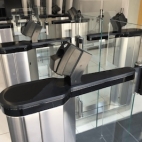 Keypads
Keypads
Keypads on turnstiles work in essentially the same way as readers. The only difference is that instead of presenting a card or tag, the user must input a valid code to gain entry. Depending on the system, there might be a specific code or set of codes for all users, or individual codes for each person. If a correct and valid code is entered into the keypad, the turnstile is released for the person to pass through.
Biometric access control for turnstiles
Biometrics add another layer of security to turnstile access control. There are inherent additional benefits to biometric solutions. For example, the person must be physically present in order to interact with a biometric reader. A swipe card can be lost or stolen, and a keypad code can be overlooked or disclosed. To use fingerprints, iris patterns, and facial features to validate your identity, you must be there in person.
Fingerprint readers
Fingerprint readers match well with turnstiles for creating efficient, effective access control systems. People can generally use fingerprint readers easily without any training. They don’t need to remember to bring a card or fob, or memorise a keypad code. This is particularly useful in gyms and leisure centres, where people may not want to bring or carry additional items with them.
High performance fingerprint readers such as the ievo ultimate also utilise multi-spectral imaging sensors which scan effectively even through levels of moisture. In a gym, people might have sweat or water on their fingers. The ultimate™ reader cuts through and analyses fingerprints at both the surface and sub-surface levels. It can even identify fingerprints through levels of dust, powder, debris, and even some Latex gloves.
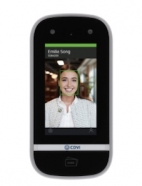 Facial recognition
Facial recognition
For an even higher level of convenience, turnstiles can be used in conjunction with facial recognition units such as iface. Facial recognition is so fast and so easy – users don’t need to bring anything, remember anything, or even do anything. They just look at the unit’s camera and if recognised, are instantly granted access. In high traffic situations where efficiency at the turnstile is key to avoid queues, facial recognition is an ideal solution.
17th May 2023








